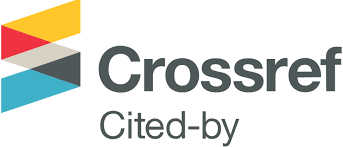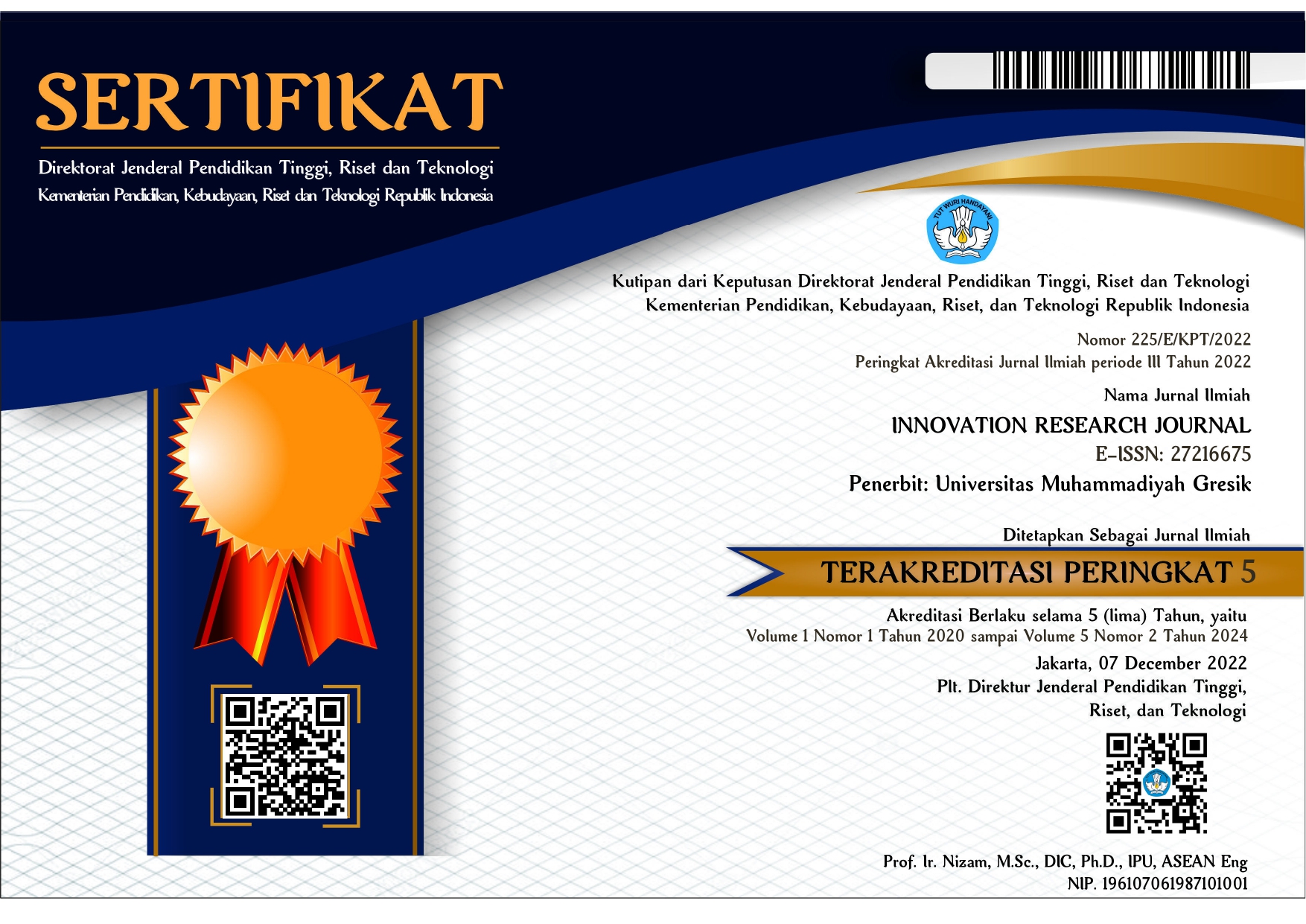The Precedents of University’s Parcel Service Quality Towards Student Satisfaction in a Higher Education Institution using SERVQUAL Model: A Conceptual Framework
DOI:
https://doi.org/10.30587/innovation.v4i1.5441Keywords:
Student Satisfaction, Parcel Service Quality, SERVQUAL modelAbstract
Service quality is among the most crucial determinant for customer satisfaction in the parcel service industry. It consists of tangibility, reliability, assurance, empathy and responsiveness. However, there is lack of research and knowledge available on the customer satisfaction with the parcel service especially in higher education level. The purpose of the research is to develop a SERVQUAL framework on student satisfaction with University’s Parcel Service Quality in a higher education institution. Therefore, this paper can act as benchmark for parcel services to checklist their quality. Future researcher can use this research as the foundation and reference about the precedents of the university’s parcel service toward the customer/student satisfaction.
References
Ali, M., & Raza, S. A. (2017). Service quality perception and customer satisfaction in Islamic banks of Pakistan: the modified SERVQUAL model. Total Quality Management & Business Excellence, 28(5-6), 559-577.
Aljaafreh, A., Gill, A., & Al-Ani, A. (2014). Towards the Development of an initial Trust Model for the Adoption of Internet Banking Services in Jordan. In PACIS, 256.
Anderson, E. J., Coltman, T., Devinney, T. M., & Keating, B. (2011). What drives the choice of a third‐party logistics provider?. Journal of Supply Chain Management, 47(2), 97-115.
Asubonteng, P., McCleary, K. J., & Swan, J. E. (1996). SERVQUAL Revisited: A Critical Review of Service Quality. Journal of Services Marketing, 10(6), pp. 62–81.
Behdioğlu, S., Acar, E., & Burhan, H. A. (2019). Evaluating service quality by fuzzy SERVQUAL: a case study in a physiotherapy and rehabilitation hospital. Total Quality Management & Business Excellence, 30(3-4), 301-319.
Binter, M. J. (1990). Evaluating service encounters: The effects of physical surroundings and employee responses. Journal of Marketing, 54(2), 69-82.
Boothe, R. (1990). Who defines quality in service industries? Quality Progress, 23(2), 65-67.
Boulding, W., Kalra, A., Staelin, R., & Zeithaml, V. A. (1993). A dynamic process model of service quality: from expectations to behavioral intentions. Journal of marketing research, 30(1), 7-27.
Bourlakis, M., Melewar, T., Banomyong, R., & Supatn, N. (2011). Selecting logistics providers in Thailand: a shippers' perspective. European Journal of Marketing, 45(3), 419-437.
Bowen, J. T., & Chen, S. L. (2001). The relationship between customer loyalty and customer satisfaction. International journal of contemporary hospitality management, 213-217.
Brady, M. K., & Cronin Jr, J. J. (2001). Some new thoughts on conceptualizing perceived service quality: a hierarchical approach. Journal of marketing, 65(3), 34-49.
Clegg, B., Kersten, W., & Koch, J. (2010). “The effect of quality management on the service quality and business success of logistics service providers”. International Journal of Quality & Reliability Management, 27(2), 185-200.
Cronin Jr, J. J., & Taylor, S. A. (1994). SERVPERF versus SERVQUAL: reconciling performance-based and perceptions-minus-expectations measurement of service quality. Journal of marketing, 58(1), 125-131.
Cronin Jr, J. J., Brady, M. K., & Hult, G. T. M. (2000). Assessing the effects of quality, value, and customer satisfaction on consumer behavioral intentions in service environments. Journal of retailing, 76(2), 193-218.
Dagger, T.S., & Sweeney, J. C. (2007). “Service quality attribute weights how do novice and longer-term customers construct service quality perceptions”? Journal of service rervice research, 10(1), 22-42.
Dost, M. K. B., Rehman, A., & ul Zia, N. (2017). Impact of Trade Marketing Activities and Salesmen Behavior on Customer Satisfaction: The Mediating Role of Supply Uncertainty and Product Contamination. The Journal of Humanities and Social Sciences, 25(2), 63-84.
Falk, T., Hammerschmidt, M., & Schepers, J. J. (2010). The service quality-satisfaction link revisited: exploring asymmetries and dynamics. Journal of the Academy of Marketing Science, 38(3), 288-302.
Fornell, C., Johnson, M. D., Anderson, E. W., Cha, J., & Bryant, B. E. (1996). The American customer satisfaction index: nature, purpose, and findings. The Journal of Marketing, 7-18
Froehlich, R. A. (1978). “Failure to Meet Their Appointed Rounds-Tort Liability of Postal Service Supervisory Personnel for Lost or Mishandled Mail”. Santa Clara L. Rev., 18,241.
Grigoroudis, E., & Siskos, Y. (2009). Customer satisfaction evaluation: Methods for measuring and implementing service quality. Springer Science & Business Media, 139.
Haming, M., Murdifin, I., Syaiful, A. Z., & Putra, A. H. P. K. (2019). The application of SERVQUAL distribution in measuring customer satisfaction of retails company. The Journal of Distribution Science, 17(2), 25-34.
Hennig‐Thurau, T., & Klee, A. (1997). The impact of customer satisfaction and relationship quality on customer retention: A critical reassessment and model development. Psychology & marketing, 14(8), 737-764.
Ho,J.S.Y., Teik, D.O.L., Tiffany, F., Kok, L.F., & Teh, T.Y. (2012). “Logistics service quality among courier service in Malaysia”. Paper presented at the International Conference on Economics, Business Innovation.
Hogan, John E., Donald R. Lehmann, Maria Merino, Rajendra K. Srivastava, Jacquelyn S. Thomas, and Peter C. Verhoef (2002), “Linking Customer Assets to Financial Performance,” Journal of Service Research, 5 (1), 26–38.
Hu, H. H., Kandampully, J., & Juwaheer, T. D. (2009). Relationships and impacts of service quality, perceived value, customer satisfaction, and image: an empirical study. The service industries journal, 29(2), 111-125.
Huff, L., Fornell, C., & Anderson, E. (1996). Quality and productivity: contradictory and complementary. Quality Management Journal, 4(1).
Jamal, A., & Naser, K. (2002). Customer satisfaction and retail banking: an assessment of some of the key antecedents of customer satisfaction in retail banking. International journal of bank marketing, 20(4), 146-160
Johnston, R. (1995). The determinants of service quality: satisfiers and dissatisfiers. International journal of service industry management, 6(5), 53-71.
Johnson, M. D., & Nilsson, L. (2003). The importance of reliability and customization from goods to services. The Quality Management Journal, 10(1), 8.
Jun, M., Yang, Z., & Kim, D. (2004). “Customers' perceptions of online retailing service quality and their satisfaction”. International Journal of Quality & Reliability Management, 21(8), 817-840.
Kashif, M., Shukran, S. S. W., Rehman, M. A., & Sarifuddin, S. (2015). Customer satisfaction and loyalty in Malaysian Islamic banks: a PAKSERV investigation. International Journal of Bank Marketing.
Kassim, N., & Asiah Abdullah, N. (2010). “The effect of perceived service quality dimensions on customer satisfaction, trust, and loyalty in e- commerce settings: A cross cultural analysis”. Asia Pacific Journal of Marketing and Logistics, 22(3), 351-371.
Klaus, P. G. (1985). Quality epiphenomenon: The conceptual understanding of quality in face-to-face service encounters. The service encounter: Managing employee/customer interaction in service business, 17-33.
Lai, I. K. (2015). The roles of value, satisfaction, and commitment in the effect of service quality on customer loyalty in Hong Kong–style tea restaurants. Cornell Hospitality Quarterly, 56(1), 118-138.
Lemon, K. N., & Verhoef, P. C. (2016). Understanding customer experience throughout the customer journey. Journal of marketing, 80(6), 69-96.
Levesque, T., & McDougall, G. H. (1996). Determinants of customer satisfaction in retail banking. International Journal of Bank Marketing, 14(7), 12-20.
Lin, H. (2010). Total Quality Management & Business the Impact of Website Quality Dimensions on Customer Satisfaction in the B2C E-commerce. Total Quality Management & Business Excellence, 18(4), 363–378.
Lovelock, C., & Gummesson, E. (2004). Whither services marketing? In search of a new paradigm and fresh perspectives. Journal of service research, 7(1), 20-41.
Mahamad, O., & Ramayah, T. (2010). Service quality, customer satisfaction and loyalty: A test of mediation. International business research, 3(4), 72.
Maltz, A., & Maltz, E. (1998). “Customer service in the distributor channel empirical findings”. Journal of Business Logistics, 19(2), 103.
McKecnie, S., Ganguli, S., & Roy, S. K. (2011). Generic technology‐based service quality dimensions in banking. International journal of bank marketing.
Noordin, A., Hasnan, N., & Osman, H. (2012). “Service Innovation of Postal and Courier Services in Malaysia: Will It Lead to Customer Responsiveness”? International Proceedings of Economics Development & Research, 42, 205-209.
Panagiotis, L. (2014), “A Study of Customer Satisfaction in Greek Postal Services” Proceedings of SOCIOINT14-International Conference on Social Sciences and Humanities.
Parasuraman, A., Zeithaml, V. A., & Berry, L. L. (1985). A conceptual model of service quality and its implications for future research. The Journal of Marketing, 41-50.
Parasuraman, A., Berry, L. L., & Zeithaml, V. A. (1991). Understanding customer expectations of service. Sloan Management Review, 32(3), 39-48
Parasuraman, A., Zeithaml, V. A., & Malhotra, A. (2005). ES-QUAL a multiple-item scale for assessing electronic service quality. Journal of service research, 7(3), 213-233.
Phusavat, K., & Kanchana, R. (2008). Competitive priorities for service providers: perspectives from Thailand. Industrial Management & Data Systems.
Ribbink, D., Van Riel, A. C., Liljander, V., & Streukens, S. (2004). Comfort your online customer: quality, trust and loyalty on the internet. Managing Service Quality: An International Journal, 14(6), 446-456.
Roscoe,J.T. (1975). Fundamental research statistics for the behavioural sciences. New York, NY: Holt, Rinehart and Winston.
Saad Andaleeb, S., & Conway, C. (2006). Customer satisfaction in the restaurant industry: an examination of the transaction-specific model. Journal of Services Marketing, 20(1), 3-11.
Saleh, F., & Ryan, C. (1991). Analysing service quality in the hospitality industry using the SERVQUAL model. Service Industries Journal, 11(3), 324-345.
Tansakul, C., Buddhakulsomsiri, J., Wasusri, T., Chaiwat, P., & Kritjaoren, T. (2013). “A Gap Analysis in Service Quality of Thai Logistics Service Providers”. Paper presented at the Proceedings of the 4th International Conference on Engineering, Project, and Production Management (EPPM 2013), Thailand, Bangkok.
Wolfinbarger, M., & Gilly, M. C. (2003). eTailQ: dimensionalizing, measuring and predicting retail quality. Journal of retailing, 79(3), 183-198.
Wu, H. C., & Ko, Y. J. (2013). Assessment of service quality in the hotel industry. Journal of Quality Assurance in Hospitality & Tourism, 14(3), 218-244.
Yee, H. L., & Daud, D. (2011). “Measuring Customer Satisfaction in the Parcel Service Delivery: A Pilot Study in Malaysia”. Business and Economic Research (1)
Yi, Y., & Zeithaml, V. A. (1990). A critical review of consumer satisfaction. Review of marketing, 4(1), 68-123









